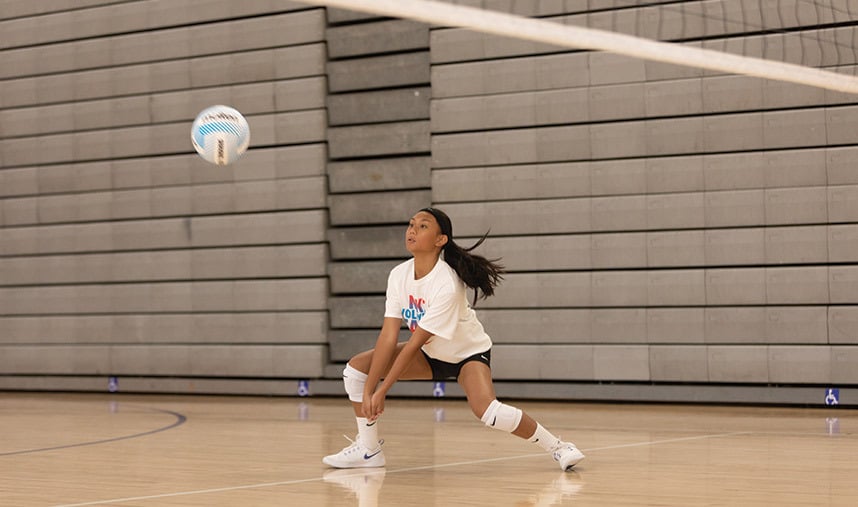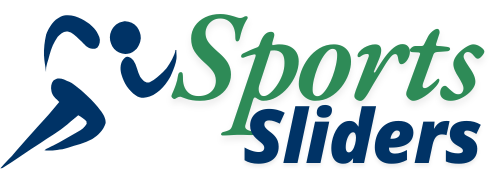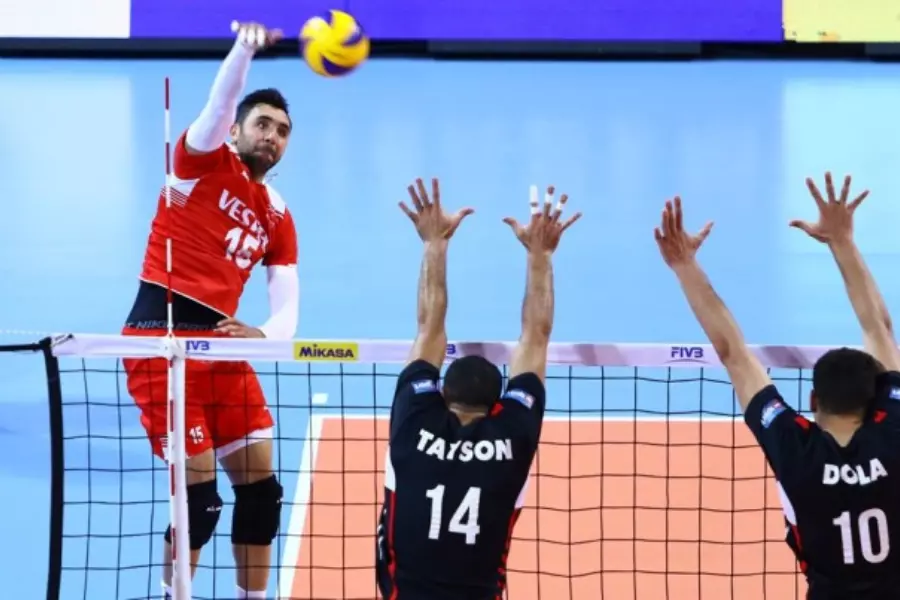Opposite hitters in volleyball are typically tall. Their height gives them a competitive edge.
In volleyball, the role of the opposite hitter is crucial. They need to block and attack effectively, making height a significant advantage. Taller players can reach higher, making it easier to spike and block shots. While there is no fixed height for an opposite hitter, many top players stand over 6 feet tall.
This blog post will explore the average heights of opposite hitters and why height is so important for this position. Understanding these details can give you better insight into what it takes to excel in volleyball as an opposite hitter. Whether you’re a player or a fan, this information can enhance your appreciation of the sport.

Credit: volleyballblaze.com
Contents
Role Of Opposite Hitters
The role of opposite hitters in volleyball is crucial. They are versatile players, often pivotal in both offense and defense. Their tall stature gives them an advantage, allowing them to block and attack effectively. This position demands agility, strength, and quick decision-making.
Key Responsibilities
Opposite hitters must excel in several areas. They are responsible for scoring points through powerful spikes. Their height helps them reach and hit the ball over the net. They also block the opposing team’s attacks. This requires quick reflexes and precise timing.
In addition to attacking, they need to be strong defenders. Opposite hitters often cover the back row during rotations. They must be ready to dig and pass the ball accurately. This ensures a smooth transition from defense to offense.
Importance In The Game
Opposite hitters play a significant role in a team’s success. Their ability to attack from the right side adds depth to the offense. This makes it harder for opponents to predict plays. Their defensive skills also help in keeping the team balanced.
Their presence on the court boosts team morale. Seeing a strong, tall player at the net can be intimidating for opponents. This psychological edge can be a game-changer. Opposite hitters often lead by example, inspiring teammates to perform better.
Physical Attributes
Opposite hitters in volleyball need certain physical attributes to excel. Their role requires a mix of strength, agility, and height. These qualities help them perform well on the court.
Strength And Agility
Strength is vital for opposite hitters. They need to deliver powerful spikes and blocks. Strong muscles in the legs and core provide the needed power. Upper body strength helps in hitting the ball hard.
Agility is equally important. Opposite hitters must move quickly. They need to change direction fast. This helps them cover the court and react to opponents’ plays. Good footwork is a must.
Height Advantage
Height gives opposite hitters a clear advantage. Taller players can reach higher. They can hit the ball over the net more easily. They also have a better angle for powerful spikes.
Being tall also helps in blocking. Opposite hitters need to stop the opponent’s attacks. A tall reach makes it easier to block the ball. This can turn the game in their favor.
Average Heights Revealed
When it comes to volleyball, one can’t help but marvel at the sheer athleticism and height of the players, especially the opposite hitters. Ever wondered how tall these players typically are? Well, wonder no more! In this section, we will uncover the average heights of opposite hitters in volleyball. We’ll delve into global averages and explore how these heights can vary by region. Let’s get started!
Global Averages
On a global scale, opposite hitters in volleyball tend to be quite tall. The average height for male opposite hitters is around 6 feet 6 inches (198 cm). For female opposite hitters, the average height is approximately 6 feet 2 inches (188 cm). These towering figures give them an edge in spiking and blocking, making them formidable opponents on the court.
Regional Variations
Interestingly, the average height of opposite hitters can vary significantly depending on the region. Here’s a quick breakdown:
| Region | Average Height (Men) | Average Height (Women) |
|---|---|---|
| North America | 6’5″ (196 cm) | 6’1″ (185 cm) |
| Europe | 6’7″ (200 cm) | 6’3″ (190 cm) |
| Asia | 6’4″ (193 cm) | 6’0″ (183 cm) |
| South America | 6’6″ (198 cm) | 6’2″ (188 cm) |
As you can see, players from Europe tend to be the tallest, which might be one reason why European teams often dominate international competitions. On the other hand, Asian players, while slightly shorter on average, bring incredible agility and speed to the game. Each region has its own strengths, making for exciting and varied competition.
So, next time you watch a volleyball match and see an opposite hitter soaring above the net, you’ll have a good idea of just how tall they are and why height plays such a crucial role in their success on the court.
Height Comparisons
Height plays a crucial role in volleyball, especially for opposite hitters. These players need to block, spike, and play both offense and defense. Therefore, understanding their height can offer insights into the game. Let’s dive into height comparisons for men’s and women’s volleyball.
Men’s Volleyball
In men’s volleyball, opposite hitters are usually among the tallest players. Their height ranges from 6’4″ to 6’10”. This height advantage helps them spike over blockers and defend effectively. Many professional male opposite hitters stand around 6’6″. This height allows them to dominate at the net. Taller players can also cover more ground during defense.
Women’s Volleyball
Opposite hitters in women’s volleyball are also tall, though generally shorter than their male counterparts. Their height ranges from 5’10” to 6’4″. A common height for female opposite hitters is around 6’1″. This height helps them perform powerful spikes and effective blocks. Taller female players can also reach higher during serves and attacks.
Impact Of Height On Performance
When it comes to volleyball, the height of an opposite hitter can significantly affect their performance on the court. As the key player responsible for scoring and blocking, having a good height can provide distinct advantages. But how exactly does height impact their game?
Offensive Skills
Opposite hitters are crucial in offensive plays. Taller players generally have a greater reach, allowing them to spike the ball more effectively. This makes it harder for the opposing team to defend against their attacks. A taller hitter can strike the ball at a steeper angle, making their shots more difficult to block or dig.
Imagine a towering player leaping high, almost defying gravity, and delivering a powerful spike. This not only energizes their team but also intimidates the opponents. A taller height can truly give an opposite hitter that extra edge in offense.
Defensive Skills
Defensively, height plays a crucial role as well. Taller opposite hitters can create a formidable block at the net, making it challenging for the opposing team to get the ball past them. Their extended reach can cover more area, effectively reducing the angles through which opponents can attack.
Moreover, height helps in making quick defensive moves. For instance, when an opponent tries to spike the ball, a tall hitter can swiftly position themselves to block or deflect the ball, turning a potential point for the other team into an opportunity for their own team.
In conclusion, height can greatly influence an opposite hitter’s performance in volleyball. It enhances both offensive and defensive skills, making them a critical asset to their team. So next time you watch a volleyball game, keep an eye on those towering hitters – they might just be the game-changers!

Credit: www.gobigrecruiting.com
Training And Conditioning
When it comes to volleyball, particularly for opposite hitters, being tall can be a significant advantage. However, height isn’t everything. The right training and conditioning can help maximize their potential on the court. It’s not just about growing taller; it’s also about becoming stronger, more agile, and more resilient. Let’s dive into some key aspects of training and conditioning for opposite hitters.
Height Maximizing Exercises
To help opposite hitters reach their maximum height potential, a combination of stretching and strengthening exercises is crucial. Here are some exercises that can make a difference:
- Stretching: Regular stretching routines can help elongate the muscles. Focus on the spine, legs, and arms.
- Pilates: Pilates can improve flexibility and core strength, contributing to better posture and height.
- Yoga: Yoga promotes overall body alignment and balance, which can help in gaining a few extra inches.
Remember, consistency is key. Incorporate these exercises into your daily routine for the best results.
Nutritional Considerations
Diet plays a vital role in an athlete’s growth and performance. Here are some nutritional tips to support height and overall health:
- Protein-Rich Foods: Include lean meats, beans, and nuts to support muscle growth.
- Calcium: Dairy products, leafy greens, and fortified cereals can help strengthen bones.
- Vitamins: Vitamins D and K are crucial for bone health. Get plenty of sunlight and consider supplements if necessary.
Proper nutrition, combined with regular exercise, can help opposite hitters reach their full potential both in height and performance.
So, whether you’re an aspiring opposite hitter or a coach looking to help your players, remember that training and conditioning go beyond just height. It’s about building a comprehensive routine that includes the right exercises and nutrition. After all, a well-rounded athlete is a successful athlete!
Notable Opposite Hitters
Opposite hitters in volleyball hold a crucial role. They balance both offensive and defensive duties. Their height often gives them an edge, making their attacks powerful. Let’s look at some notable opposite hitters who have made their mark.
Famous Male Players
Many male opposite hitters have impressed fans worldwide. One such player is Maxim Mikhaylov from Russia. Standing at 6 feet 8 inches, his spikes are formidable. His height and skill make him a top performer.
Another notable player is Ivan Zaytsev from Italy. He is 6 feet 8 inches tall. His powerful serves and spikes make him a valuable team member. His agility and height set him apart.
Famous Female Players
Female opposite hitters also show remarkable talent. Tijana Boskovic from Serbia is a prime example. She stands at 6 feet 4 inches. Her attacking skills and height make her a standout player.
Another famous player is Jordan Larson from the USA. She is 6 feet 2 inches tall. Her height and skills help her dominate the court. She is well-known for her powerful and precise attacks.

Credit: www.ussportscamps.com
Future Trends
Volleyball is always evolving. The height of opposite hitters is a key trend. Coaches and scouts pay close attention to height. In this section, we will look at future trends for opposite hitters.
Height Projections
Experts predict that opposite hitters will get taller. The average height for these players could increase. This is due to the benefits of height in blocking and attacking. Taller players have more reach. They can block and spike more effectively. Teams seek players with these advantages. As a result, the average height may continue to rise.
Evolution Of The Role
The role of the opposite hitter has changed. Today, these players need more than just height. They must be versatile. This means they should be good at defense and setting, too. Coaches look for all-around skills in opposite hitters. Future opposite hitters may need to adapt. They must balance height with skill and agility.
Frequently Asked Questions
How Tall Are Hitters In Volleyball?
Hitters in volleyball typically range from 6 feet to 6 feet 6 inches tall. Height provides an advantage at the net.
What Makes A Good Opposite Hitter In Volleyball?
A good opposite hitter in volleyball excels in powerful attacks, strong blocking, reliable defense, and adaptability on the court.
Is 4 11 Too Short For Volleyball?
4’11” is considered short for volleyball. Players typically benefit from greater height, especially for positions like spiker or blocker.
Who Is The 5 Foot 7 Volleyball Player?
The 5-foot-7 volleyball player is often associated with the talented athlete, Jordan Larson. She is an American professional volleyball player.
Conclusion
Opposite hitters in volleyball often stand tall, typically over six feet. This height gives them an advantage for powerful spikes and effective blocks. Taller players dominate the net, making it harder for opponents. Their height and skill make them crucial to a team’s success.
Coaches often look for taller athletes for this position. Understanding the height advantage can help you appreciate their role. So, next time you watch a game, notice the height of opposite hitters. It’s a key factor in their performance on the court.

